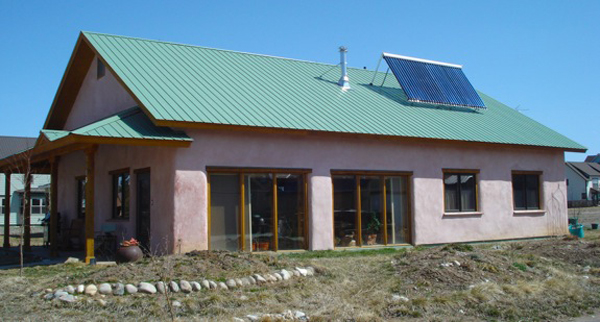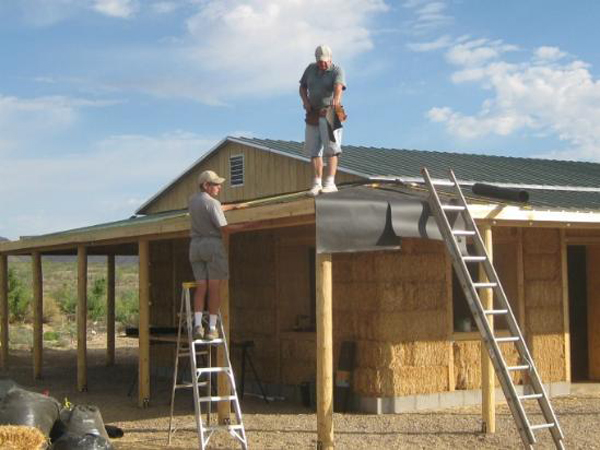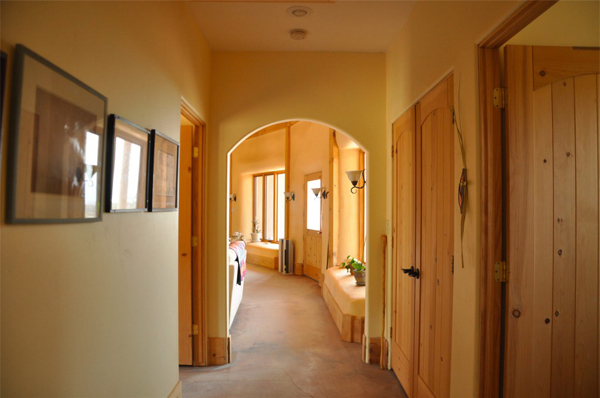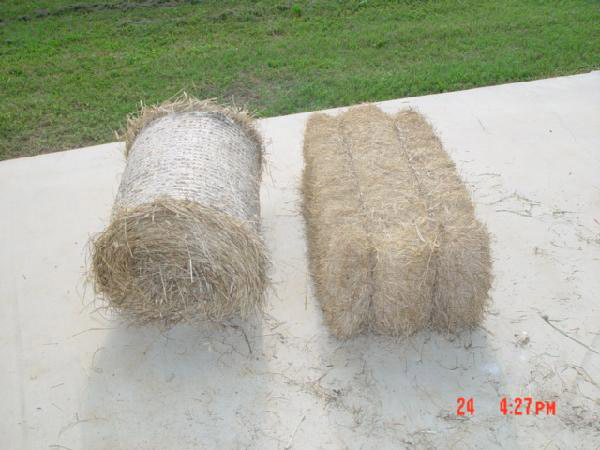Information Guide to Straw Bale Building – for Self-builders and the Construction Industry by Amazon Nails 2001. Free PDF download.
straw bale construction
A Passive Solar Straw Bale Home

“This passive solar straw bale house is situated in one of the coldest places in the nation.
Gunnison, Colorado, ranks within the top 5 cities with the average coldest temperatures in the United States, yet the insulating properties of the straw bales make this an efficient and comfortable passive solar home. An amazing aspect of this house is that it is made primarily from all natural materials: straw, wood and various mixtures of adobe mud, including mud-plaster, cob (free form clay with straw) and adobe bricks.
Straw Bale Building: DIY Wrap-Around Porch

“Climate and weather in the high desert of Arizona are harsh. Granted, we don’t have the severe cold of northern states, but monsoonal rains driven by 50 mph winds and intense sun that will burn skin through a long sleeved shirt can be tough on a building made of straw and adobe clay.
Paja Construction

Many readers may not be aware of all the companies who have pioneered the natural building movement and have built up vast experience in the field. Someone new to the subject might think the ideas we talk about are fringe or experimental or untested simply because they’re not aware of how many companies there are and how many structures have been built this way. So, I’ve decided to start profiling some leading natural building companies. Send me a link if you have a suggestion. (We are not being remunerated in any way for these company profiles.)
Turning Round Straw Bales into Rectangular Building Bales

Cliff, one of our long time readers, sent me the photo above and the following email.
“Just a heads up on something I see coming in the future in the straw bale world. Small round bales. Lots of reasons. There are a lot of lifestyle or small farmers who can’t afford or need the big expensive bales. These smaller balers are much cheaper to buy and operate. The bales are much more weather resistant than square bales. Here in NZ they can fit down a row of vines in a vineyard. Any other baler can’t go there. I think we may see some innovation in the straw bale building world. You use what is available and as these become more available people will adapt to using them.”
